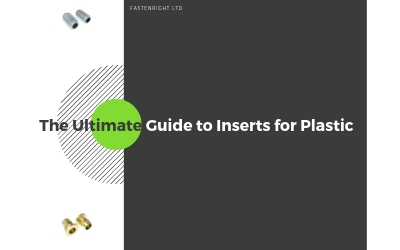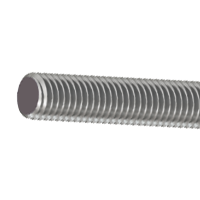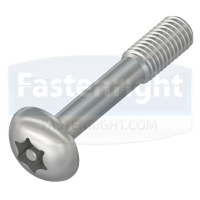Inserts for plastic are generally used in applications where the need for strong and durable metal threads is prevalent. This is often the case in areas where the unit is frequently assembled and disassembled for maintenance or repair. In fact, an insert for plastic is one of the best fastening options for a job like this.
Some of the most common applications include electronics, automotive, aerospace, and some recreational equipment.
For thermoplastics or thermoset plastics, and at times soft woods such as chipboard or plywood – the inserts for plastic that we can provide are available in a number of materials, sizes and designs.
The Basics of Inserts for Plastic
The most common material that an insert for plastic is made from is brass – however, with sustainability taking a forefront in the modern day, alternatives without lead such as stainless steel or aluminium are becoming increasingly more popular. Each of the alternatives has its own benefits, such as stainless steel offering better corrosion resistance and strength, whilst aluminium inserts are significantly lighter than the brass.
Just as important though, is the material that the insert will be placed into. There are thermoplastics, which can only be inserted into via two processes, ultrasonic and heat-staking. Thermoplastics can be molded and remolded a number of times via ultrasonic or heat-staking methods as they do not generally undergo a chemical change when they are molded.
Thermoset plastics often are molded in or cold pressed into the plastic later in the process.
There are common thermoplastics, such as polyvinyl chloride, polyethylene, nylon and polypropylene, and common thermoset plastics can include polyurethane, melamine, polyester and fibreglass.
For inserts that are installed ultrasonically, they are installed by pressing the insert into a mounting hole with ultrasonic insertion equipment, whilst applying a high-frequency vibration at the same time. The vibration causes frictional heat, melting plastic surrounding the insert, allowing for easy insertion, before the vibration stops and the plastic solidifies – locking the insert in place.
A heat staking installation involves pressing the insert into a mounting hole with a thermal press which melts the plastic surrounding the insert.
Inserts that are molded-in are located in the mold cavity by a core pin, eventually leaving the insert permanently in the plastic. The molding process eliminates the need for installation equipment.
Press-In Inserts are perhaps the most simple to install as they are just simply pressed into pre-molded or drilled holes. These eliminate the need for molding-in or heat staking or ultrasonic installations.
Inserts for Plastic with Knurling
Knurling is a process of metalworking in which a pattern is cut into or rolled onto the outside of a fastener. For threaded inserts, the knurling is exceptionally critical as it directly impacts pull-out and torque resistance.
There are straight knurls, which run parallel to the length of the insert and offer the greatest resistance to torque, but it struggles against pull-out. Grooves can be placed between the knurl bands can increase pull-out resistance.
There are a number of unique inserts that we can offer, all with differing knurls such as opposed knurls, rounded knurls, herringbone knurls and helical knurls. Helical knurls balance resistance to forces in both directions, however, the most commonly used are the hexagonal knurls which offer resistance in every direction.
Inserts for Plastic from Fastenright in a Range of Sizes
We are able to provide standard threaded inserts for plastic, with sizes ranging from M2 to M10 depending on the type – however for smaller applications, we can have smaller inserts made to order.
If you require more information about our insert for plastic range and how they could benefit your application, please contact us to take your enquiry further. Minimum order quantities may apply.




